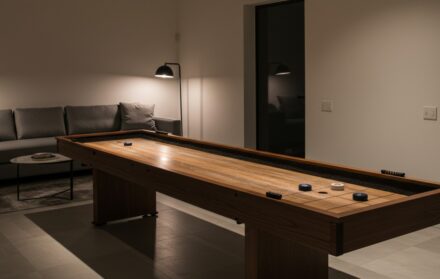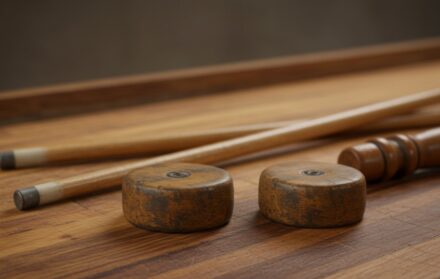
What Are the Top Shuffleboard Strategies and Techniques?
Shuffleboard is one of those games that rewards patience, accuracy, and a sharp mind. At first glance it looks simple: slide your puck or disc along the surface and try to score points. Yet anyone who has played more than a handful of games quickly realises that shuffleboard is as much about strategy as it is about skill. You can have the perfect shot lined up, only for an opponent to knock it away with one well-placed push. You might lead for several rounds, only to lose in the final frame because you chased the wrong points or left your scoring zone unprotected.
This is why the best shuffleboard players aren’t just mechanically skilled — they are strategic thinkers. They know when to attack, when to defend, when to play safe, and when to take risks. They use techniques that give them an edge, whether they’re playing on a compact pub table in the UK, a full-length 22-foot tournament model, or a deck shuffleboard court on a cruise ship. It’s no surprise then that many venues host shuffleboard tournaments, as the game naturally lends itself to competitive yet friendly play.
In this guide, we’ll explore the top shuffleboard strategies and techniques that help players win more consistently. From basic grips and shots to advanced tactics, you’ll learn how to approach each game with the mindset of a strategist rather than just a casual player.
The Importance of Strategy in Shuffleboard
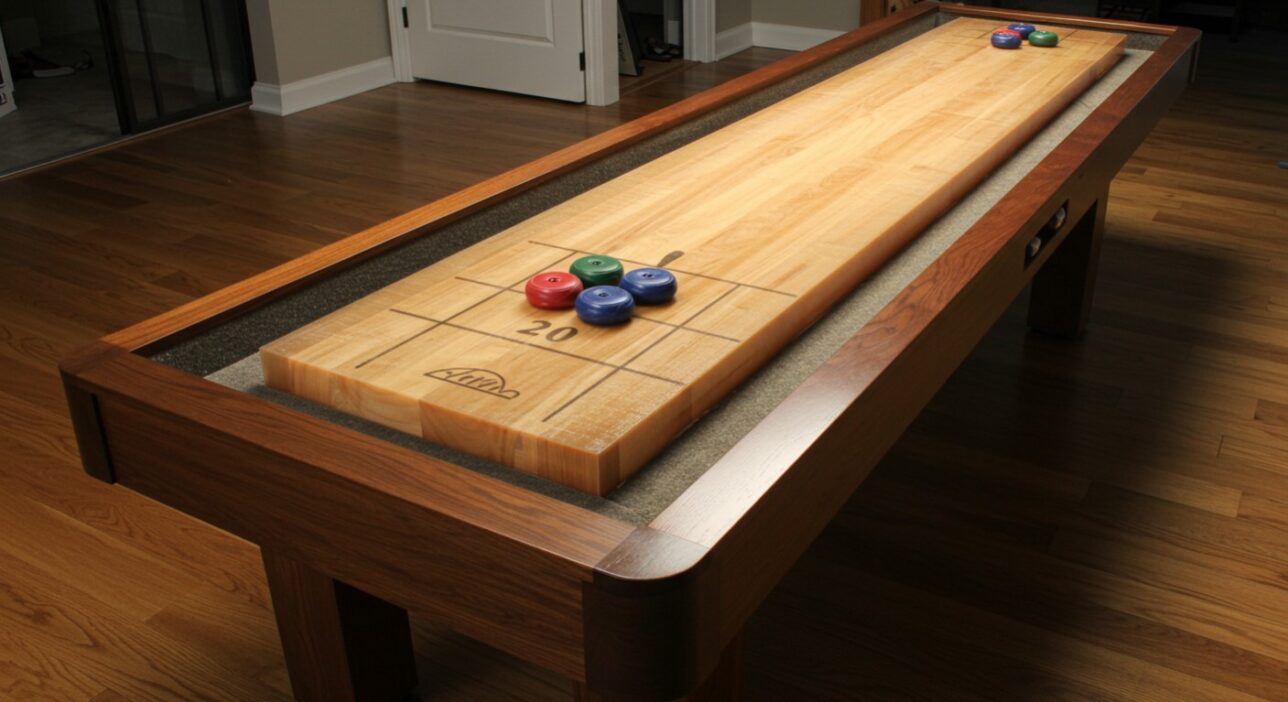
Unlike purely physical games, shuffleboard combines touch with tactics. Even if you can slide a puck smoothly into the scoring zone, you won’t win unless you understand how to outthink your opponent.
Strategy matters because:
-
Every shot changes the board. After the first puck is played, the rest of the round is about responding to positions and opportunities.
-
Points are scarce. In table shuffleboard, often only one player scores in a round, so protecting your lead is as important as earning it.
-
Risk and reward are constant. Going for a 3-point zone looks tempting, but if you overshoot, you may hand your opponent the chance to score instead.
In short, shuffleboard strategy is about making the smartest choice available, not just the flashiest.
Fundamental Shuffleboard Techniques
Before diving into strategy, every player needs solid technical skills. Without consistency, even the best tactics fall apart.
Grip and Stance
Hold the puck comfortably, with your fingers resting lightly on the sides and your thumb guiding the top. Avoid gripping too tightly — tension leads to wobbly releases. Stand with feet shoulder-width apart for balance, leaning forward slightly as you slide the puck.
Shot Types
-
Soft push – A gentle shot used for short distances or safe placement.
-
Firm push – Stronger, controlled slide to reach far zones.
-
Knock-off – Targeting and removing an opponent’s puck from scoring position.
-
Guard/block – Placing your puck strategically to protect your scoring puck or block an opponent’s path.
Controlling Speed and Distance
This is the hardest shuffleboard skill for beginners. Too much power sends the puck flying off the end; too little leaves it short. Practise judging distances by varying your push and watching how different wax speeds affect the glide.
Offensive Shuffleboard Strategies
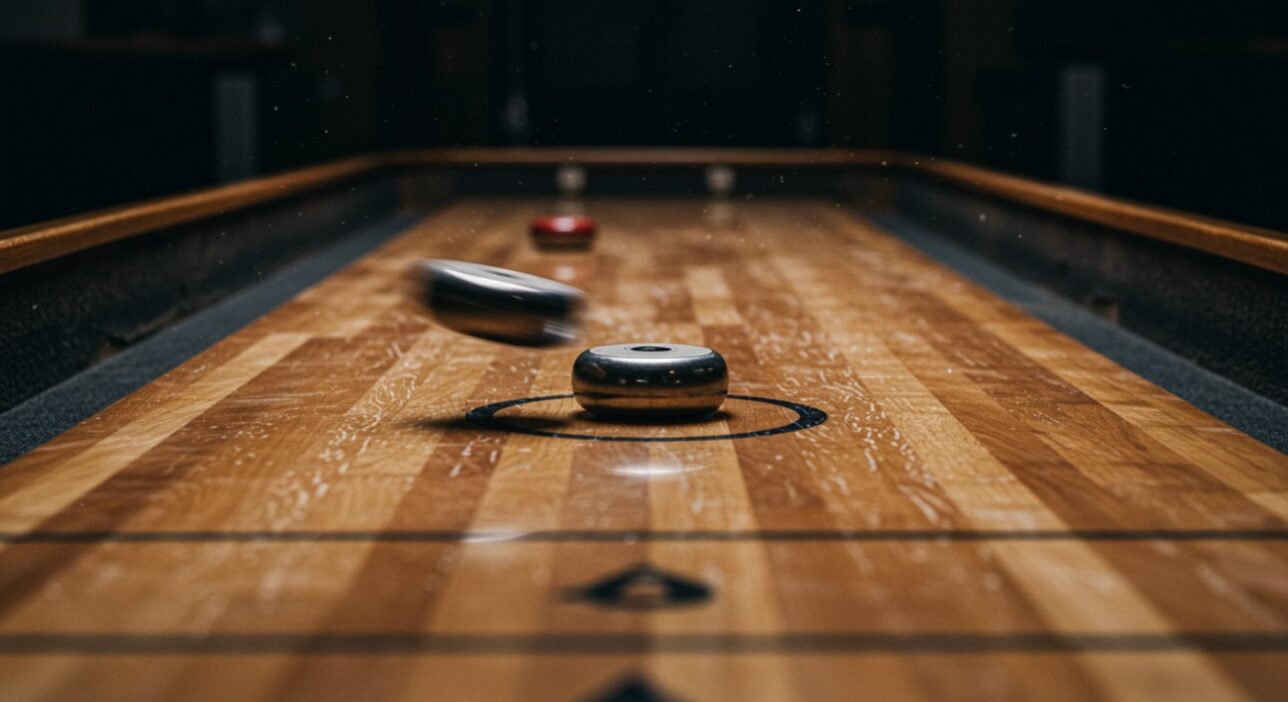
When playing offensively, the goal is to maximise your score while putting pressure on your opponent.
Going for High-Value Zones
Landing in the 3-point zone (table) or the 10-point area (deck) can be a game-changer. But these shots are also the hardest to hold. Use them sparingly and when you’re confident in your touch.
The Hanger
A hanger is a puck that rests at the very edge of the table, overhanging slightly without falling. It is often worth 4 points, making it one of the most valuable plays in table shuffleboard. Achieving it requires precision — too much force and it falls, too little and it stops short. Aim to master this technique, as it can turn the tide of a match.
Building Point Spreads
Instead of chasing maximum points each time, focus on spreading your pucks across zones. If you have one puck in the 3-point zone and another safely in the 2, you create multiple scoring opportunities while forcing your opponent to choose which to challenge.
Using First Shots Wisely
The first shot of a round sets the tone. Avoid reckless attempts at high scores. Place your puck in a safe scoring zone or use it as a guard to block the centre. This makes it harder for your opponent to set up their own high-value shot.
Defensive Shuffleboard Strategies
Defence is what separates strong shuffleboard players from casual ones. Knowing when to block or clear can win more games than risky scoring attempts.
Blocking Lanes
Place your puck in front of a scoring zone to force your opponent into trickier angles. This is particularly effective if you already have a puck behind the block, as it acts like a shield.
Clearing Shots
Sometimes it’s better to remove your opponent’s puck than to go for points yourself. A clean knock-off can eliminate their scoring chance and leave the board open for your next turn.
Sacrificing Points
There are moments when giving up a low-value score is the smart play. For example, it may be worth leaving your opponent with a 1-point puck if it prevents them from reaching the 3-point zone.
End-Game Defence
When you’re close to winning, defensive play becomes even more important. Focus on blocking, clearing, and avoiding risky shots that could hand your opponent a comeback.
Reading the Table and Adjusting Play
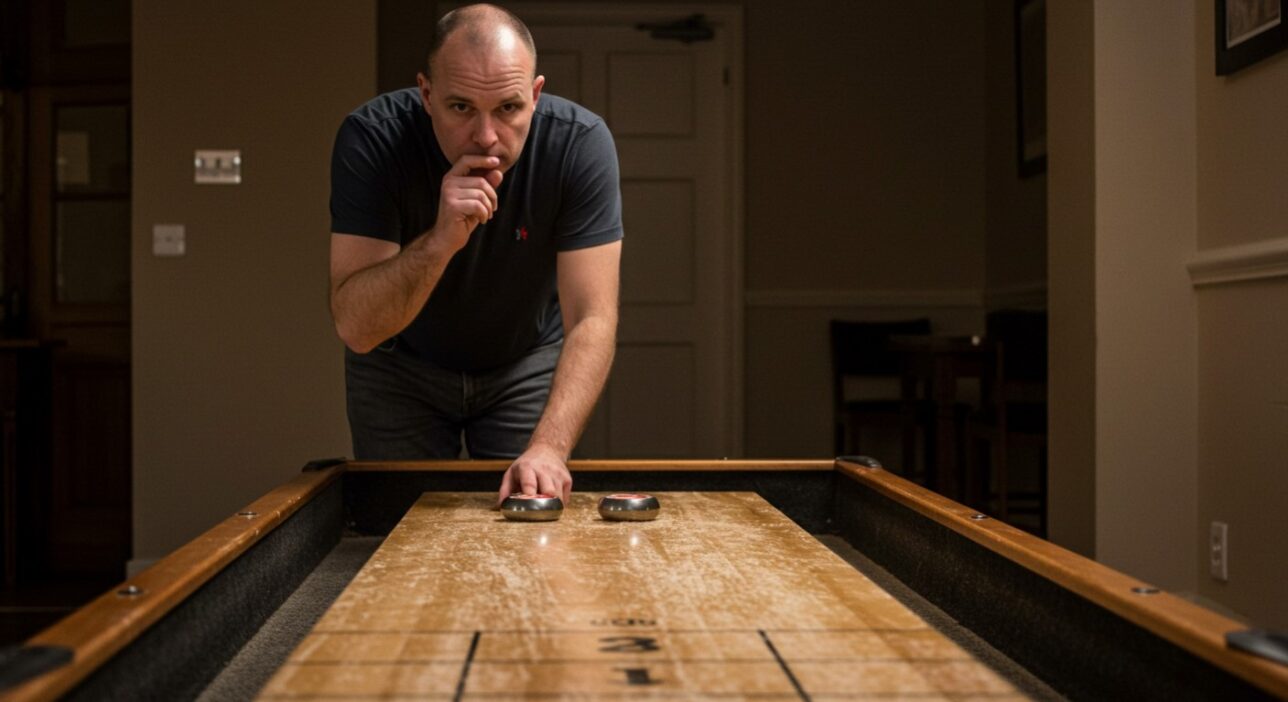
No two shuffleboard tables play exactly the same. Wax speed, table length, humidity, and even wear on the surface affect performance.
-
Observe early. Watch how your first puck slides to gauge speed.
-
Check sides. Many tables have one “fast” side and one “slow” side — adapt accordingly.
-
Adjust strategy. If pucks are sliding off easily, play more conservatively. If the table feels slow, you may need firmer pushes.
The best players are those who adapt quickly to conditions rather than sticking stubbornly to one style.
Techniques for Consistency
Consistency is what transforms occasional lucky shots into reliable performance.
-
Pre-shot routine. Take the same stance, grip, and release every time.
-
Accuracy drills. Practise landing multiple pucks in the same zone to build muscle memory.
-
Composure. Shuffleboard is as much mental as physical. Avoid frustration and keep focus even after a bad shot.
-
Collision prediction. Learn how pucks deflect off each other. Anticipating these bounces gives you a tactical advantage.
Advanced Tactics for Competitive Play
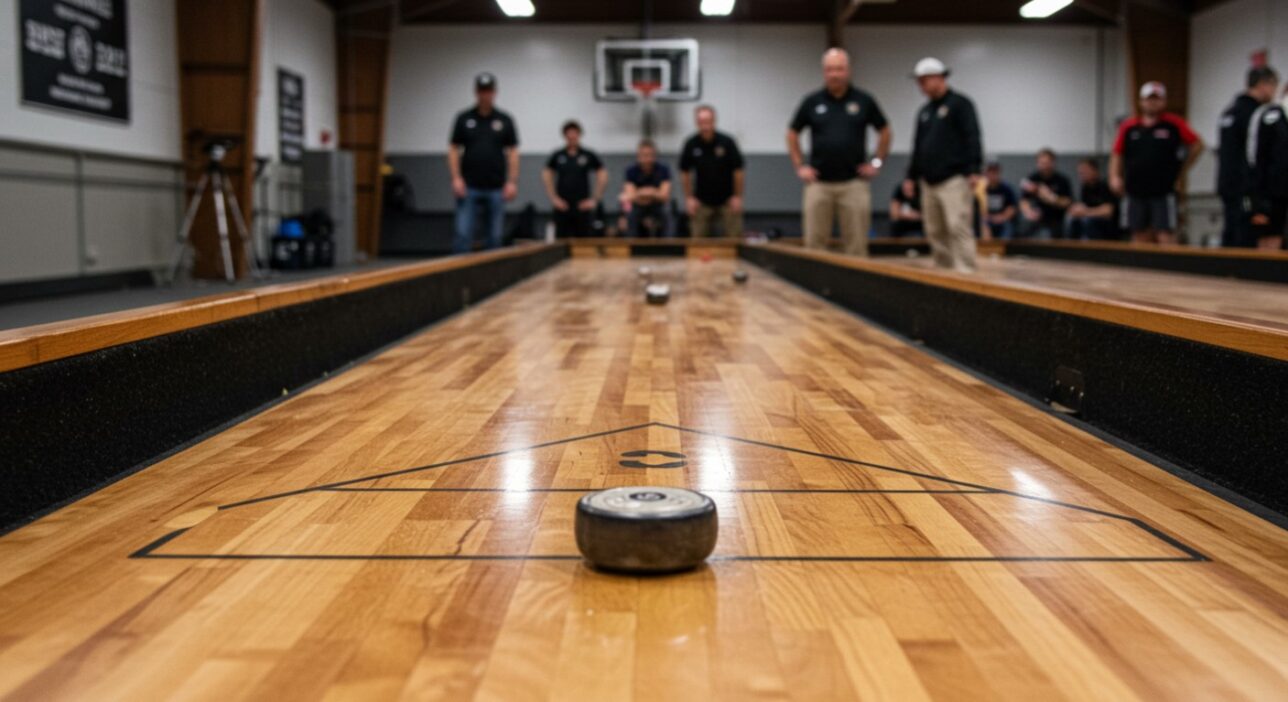
For those who want to go beyond the basics, advanced shuffleboard tactics add another layer of skill.
Double Blocking
Place two pucks in line to protect a valuable scoring position. This makes it difficult for your opponent to knock them both clear.
Bank Shots
On table shuffleboard, the side rails can be used to angle shots. Skilled players exploit this for surprising knock-offs or tricky placements.
Set-Up and Sacrifice
Sometimes you deliberately place a puck where it is likely to be knocked off, drawing your opponent into a risky shot. This creates openings for your next turn.
Endgame Tactics
When you’re close to winning, play conservatively. Secure small points rather than chasing risky hangers. Conversely, if you’re behind, it may be worth going all-in on a high-risk, high-reward shot.
Comprehensive Comparison: Singles vs Doubles Shuffleboard Strategies
| Aspect | Singles Strategy | Doubles Strategy |
|---|---|---|
| Responsibility | In singles, you carry the entire load. Every shot counts, and you are responsible for both offensive scoring and defensive blocking. If you make an error, there is no partner to cover for you. This requires a disciplined mindset where you constantly weigh risk versus reward. | In doubles, responsibilities can be divided. While both partners contribute, you can assign roles: one focuses more on setting up scoring pucks, while the other specialises in defensive clears and knock-offs. This division of labour allows you to play more aggressively or defensively as needed. |
| Shot Selection | A singles player must mix offence and defence carefully. Too much aggression leaves you exposed, while excessive caution reduces scoring opportunities. The key is balance — safe scoring pucks early, followed by tactical knock-offs when required. | In doubles, shot selection often depends on your partner’s position. If they already placed a strong scoring puck, your job may shift to blocking. If they missed, you may need to take the risk. Doubles strategy is dynamic — adapt to complement your teammate’s last shot. |
| Communication | Not applicable in singles — it’s all about self-discipline and focus. Instead, “communication” happens internally: keeping calm, reading the board, and sticking to a plan even under pressure. | Communication is the heart of doubles play. Partners should discuss who will play offensively, when to clear, and how to approach key shots. Even simple signals or quick discussions can prevent wasted turns. Silent teams often underperform compared with vocal, well-coordinated pairs. |
| Offensive Play | Singles players must decide when to attack high-value zones and when to settle for safe points. A common tactic is to start each round conservatively, then take calculated risks if trailing late in the game. | In doubles, one partner can take on the role of “scorer,” aiming for high-value zones or hangers. The other partner can then protect these pucks by blocking or clearing threats. This one-two punch is highly effective when executed smoothly. |
| Defensive Play | Defence in singles requires anticipation. If your opponent has a puck in the 3-point zone, you must calculate whether to clear it or try to outscore. Timing defensive shots correctly often determines the winner in singles. | In doubles, defence can be layered. One partner can place a block in front of an opponent’s puck while the other clears another threat. This coordinated defence is difficult for opponents to counter and can frustrate even skilled players. |
| Adaptability | Singles players must adapt quickly. You have no partner to adjust for you, so you need to read the table, recognise opponent tendencies, and change strategy on the fly. | Doubles players adapt as a team. If one partner struggles with aim or speed, the other can step in to take riskier shots. Teams that adjust roles mid-game — without ego — often outperform rigid partnerships. |
| Psychological Approach | Playing alone tests your composure. Momentum swings can feel more intense, and it’s easy to become rattled after a mistake. Strong singles players learn to reset mentally after each shot. | In doubles, psychology is shared. Partners can encourage each other after misses and celebrate together after strong plays. This morale boost often gives doubles teams resilience that singles players lack. However, poor chemistry can sink even technically skilled pairs. |
| Common Mistakes | Overcommitting to risky hangers, ignoring defence, and losing composure after bad rounds. Many beginners in singles try to score every turn instead of mixing defence with safe plays. | Poor communication, unclear roles, and partners competing for the same shots. Doubles teams sometimes waste turns by both playing aggressively instead of coordinating offence and defence. |
| Winning Example | A singles player might secure victory by focusing on safe 1- and 2-point zones early, forcing their opponent into risky shots. Later, they switch to defensive clears to protect the lead. | A doubles team might win by having one partner consistently place pucks in scoring zones while the other acts as protector, blocking threats and clearing opponent pucks. Over time, this steady teamwork outpaces flashier but disorganised opponents. |
Key Takeaways
-
Singles shuffleboard demands self-sufficiency. You must blend offensive and defensive tactics every round, manage your own composure, and stay adaptable. It’s about being a complete player who can think two or three shots ahead.
-
Doubles shuffleboard is about partnership synergy. Strong communication, clear role assignment, and trust in each other’s decisions are more important than individual skill. A well-organised pair will often defeat two technically superior but uncoordinated players.
Common Strategic Mistakes to Avoid

Even experienced players sometimes fall into traps.
-
Overcommitting to high-risk shots. Chasing 3s or hangers too often backfires.
-
Neglecting defence. Beginners especially forget the power of blocking and clearing.
-
Forgetting to count. Always know how many points your opponent has and what they need to win.
-
Predictability. If you always aim for the same zones, opponents will learn to counter you.
Avoiding these mistakes can be just as valuable as learning advanced tactics.
Practice Routines to Build Strategy and Technique
Developing strategy is not just about playing matches. Structured practice helps you internalise techniques.
-
Zone drills. Place pucks in each scoring zone deliberately to practise touch.
-
Knock-off challenges. Take turns trying to clear a set puck.
-
Defensive games. Play rounds where the goal is only to block or protect.
-
Review sessions. After games, discuss what worked and what didn’t to refine strategy.
With practice, you begin to see the board strategically rather than just as a target.
Conclusion: Mastering Shuffleboard Strategies and Techniques

Shuffleboard is a game that rewards not just steady hands but sharp minds. The top strategies and techniques involve blending offence and defence, knowing when to go for points and when to play safe, and adapting to conditions as they change.
For beginners, the focus should be on consistency, grip, stance, and simple strategies like blocking and safe scoring. For more advanced players, tactics such as double blocking, bank shots, and sacrifice plays elevate the game to a new level. Singles play demands balance, while doubles require teamwork and communication.
Ultimately, shuffleboard strategy is about making smarter choices than your opponent. With regular practice and attention to technique, anyone can progress from casual player to savvy competitor. And along the way, the game becomes not just about sliding pucks, but about enjoying the satisfaction of outthinking and outmanoeuvring your rival.
